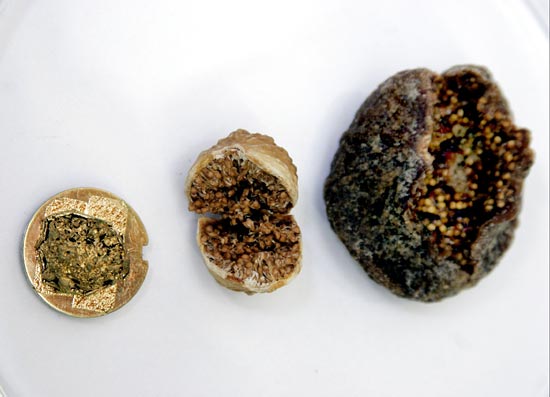
When it is appropriate to do so, I love talking about food and the origin of various crops in my history classes -- in the past, this has generally meant world history and ancient history courses. Ancient Middle Eastern crops came out in discussing the background to early Islamic history a couple of weeks ago, and I had a fair amount to say about dates, a very important crop in Iraq at any time in its history. Soon after, I ran across this National Public Radio piece on figs as one of the earliest crops, a possibility revealed by new explorations near ancient Jericho, which rated a mention in my discussions of early towns and agriculture. I promised a link to the Islamic history class, and here it is!
Image: from NPR, showing an ancient fig (L) next to modern Iranian and Turkish figs (R).
It's amazing how little people consider the foods on their plate (or in their cup). The history of spices, tobacco, coffee and chocolate alone are fascinating -people went to war and went on espionage operations for this stuff! My husband is from Morocco and tomatoes, potatoes and several other "new world" crops are staples there (like almost everywhere) but when I remind him of this he's always shocked. Cuisine in the ancient period and middle ages prior to 1492 must have been very different. One thing's for sure, I'm glad to be living now when chocolate is 1.available at all to non-Central Americans and 2. women can drink it! How do your students react when you incorporate food history into your lessons?
ReplyDeleteAs far as I can tell they are very interested. Someone else here teaches a food history course.
ReplyDeleteWhat a school. I presume underwater basketweaving is not offered, however. (Only joking, I'm sure the course is fascinating.)
ReplyDeleteIt's part of our growing enviromental history emphasis.
ReplyDelete